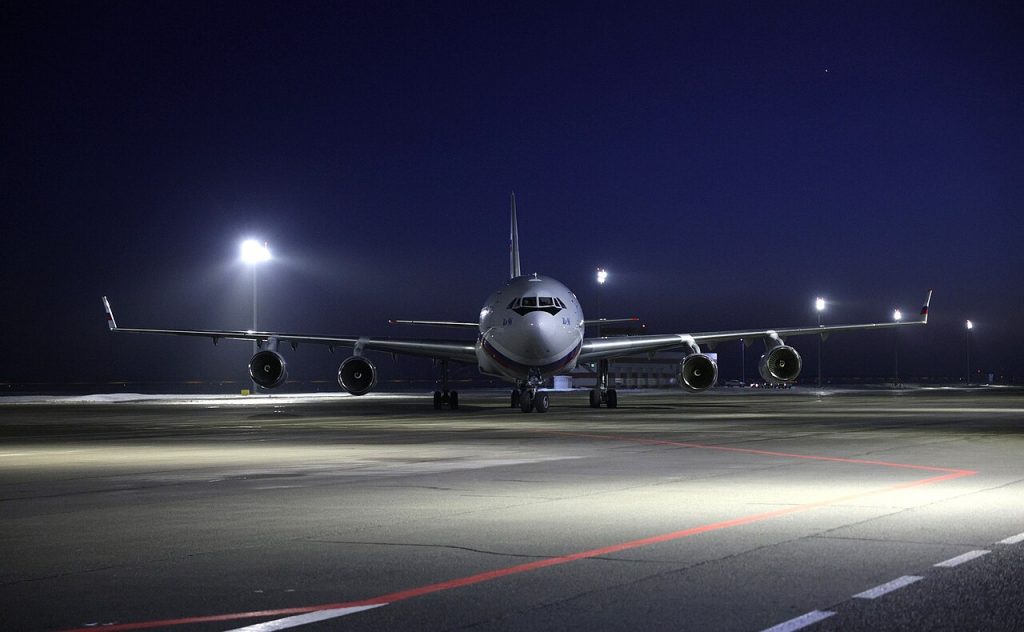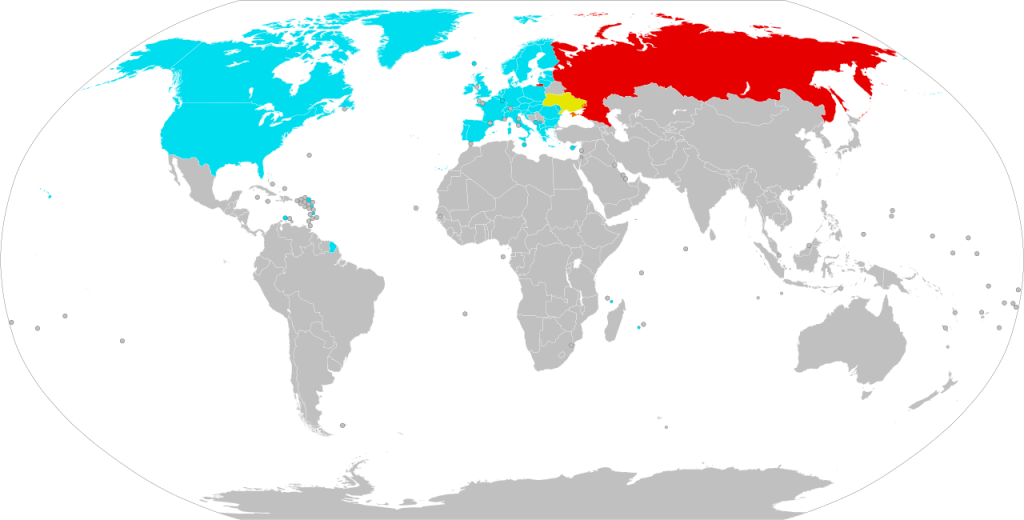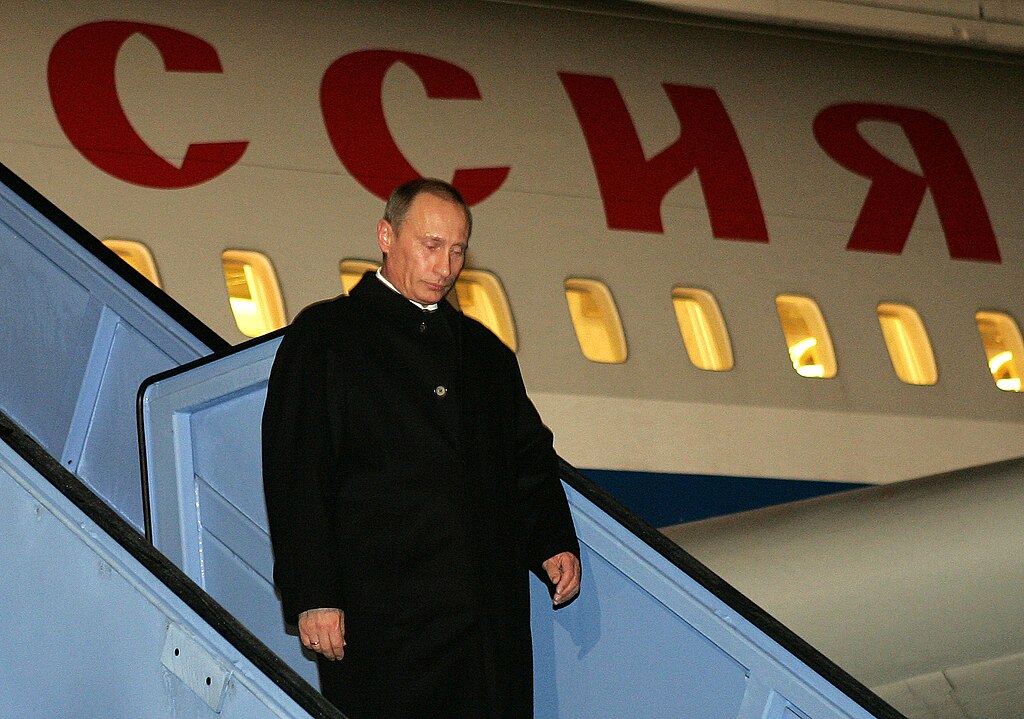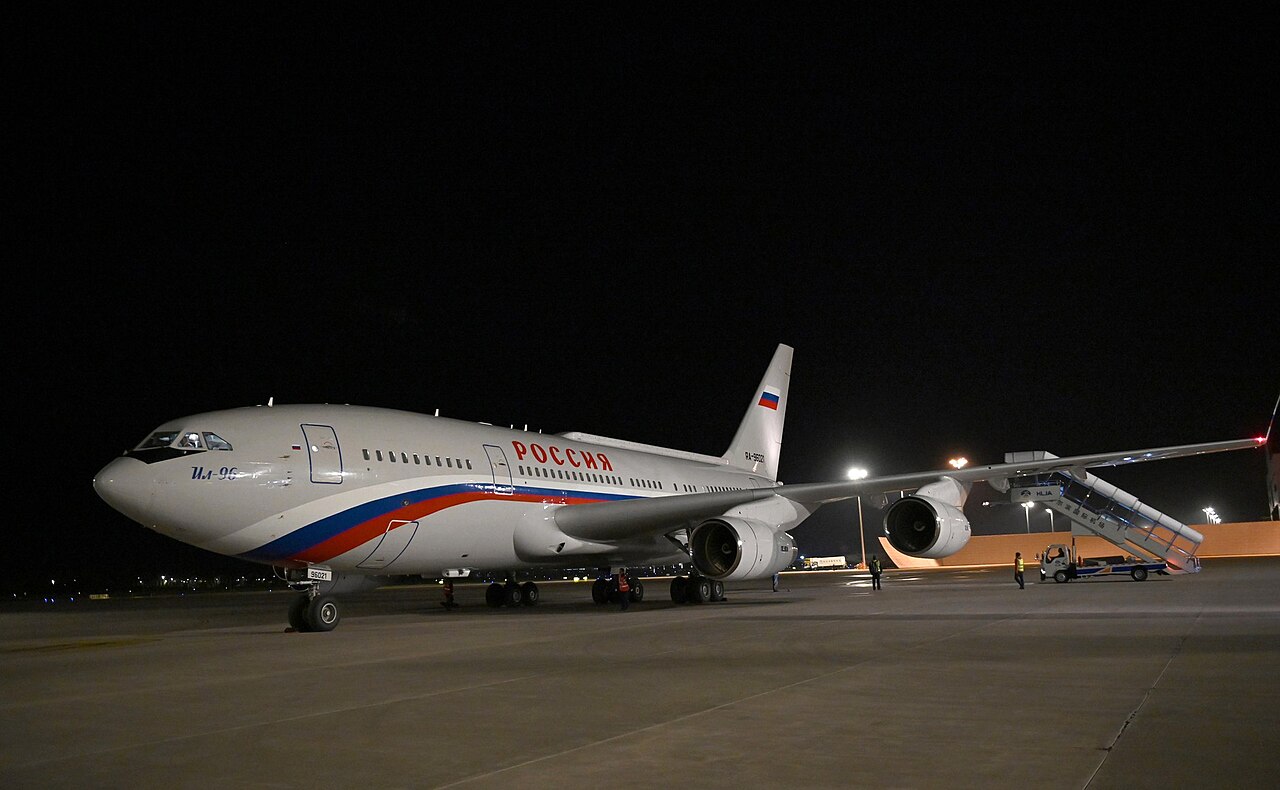Putin-Trump summit: In the coming two weeks, a key summit between U.S. President Donald Trump and Russian President Vladimir Putin is set to take place in Budapest, Hungary.
The talks, aimed at advancing peace negotiations for the Russia-Ukraine conflict, face a complex hurdle: navigating the European Union’s airspace restrictions.
Since Russia’s 2022 invasion of Ukraine, the EU has banned Russian-registered aircraft, including Putin’s presidential Ilyushin Il-96, from its airspace.
This creates significant logistical, legal, and safety challenges for the Russian leader’s travel to the summit.
The EU Airspace Ban: A Major Obstacle
The EU’s sanctions, implemented in February 2022, prohibit Russian-owned or chartered aircraft from entering or transiting EU airspace.
This includes non-scheduled flights like Putin’s “Flying Kremlin,” a specially equipped Ilyushin Il-96 designed for secure, long-range travel.
Before the ban, a direct Moscow-Budapest flight took about three hours. Now, Putin’s team must secure cleared routes through EU airspace or opt for lengthy detours, each with its own risks.

The ban reflects the EU’s broader strategy to isolate Russia economically and diplomatically. However, exemptions are possible for humanitarian or peace-related purposes, such as this summit.
The European Commission has noted that no formal travel ban applies to Putin himself, only an asset freeze.
Individual EU member states must approve overflight requests, creating a patchwork of diplomatic decisions.
Hungary, the summit’s host, has pledged to ensure Putin’s safe entry and exit, but neighboring countries’ cooperation remains uncertain.

Route Options and Their Challenges
Aviation analysts outline three potential flight paths for Putin’s journey, each fraught with complications:
Northern EU Route
This path would take the presidential jet from Moscow through Belarus, then over Poland or Slovakia to Hungary.
Poland, a strong supporter of Ukraine, is unlikely to grant permission and has warned it could intercept unauthorized Russian aircraft. Slovakia might be more flexible, but as an EU member, it’s bound by the same sanctions.
Balkan/Southern Route
A more feasible option involves flying over the Black Sea to Turkey, then through Bulgaria or Romania to Hungary. Alternatively, the route could pass through non-EU Serbia, which has no airspace restrictions for Russia.
This path adds two to three hours to the flight but is favored due to Turkey’s support and the EU’s case-by-case exemption process for peace talks.
Eastern Detour
A longer route would see the jet fly over Central Asia or the Middle East before entering the Balkans. This avoids EU airspace entirely but increases fuel demands and exposes the flight to geopolitically unstable regions like Iran. Russia has used such detours for VIP travel since 2022, but they’re less efficient.

Putin-Trump Summit: Safety and Diplomatic Risks
Safety is a top concern. Putin’s aircraft would likely require fighter jet escorts, possibly Russian Su-35s or Turkish F-16s, especially over the militarized Black Sea.
Any interception or forced landing by an EU state would violate international aviation law under the Chicago Convention, risking a major diplomatic incident.
Poland’s hawkish stance adds tension, as it has signaled zero tolerance for Russian airspace violations.
The International Criminal Court’s 2023 arrest warrant for Putin further complicates matters. While Hungary is withdrawing from the ICC and has promised to receive Putin respectfully, other EU states may face pressure to enforce the warrant, impacting overflight decisions.
Looking Ahead
As of October 18, 2025, EU discussions on airspace exemptions are ongoing, with no final decisions. Hungary’s pro-Russia stance and Prime Minister Viktor Orbán’s support make Budapest a viable host, but the aviation logistics remain a hurdle.
If exemptions aren’t secured, the summit could shift to a virtual format or a non-EU venue like Turkey. Both leaders, however, seem committed to meeting in person.
The aviation challenges highlight the delicate balance between diplomacy and geopolitics. For the Putin-Trump summit to succeed, careful coordination and clear skies are essential.

